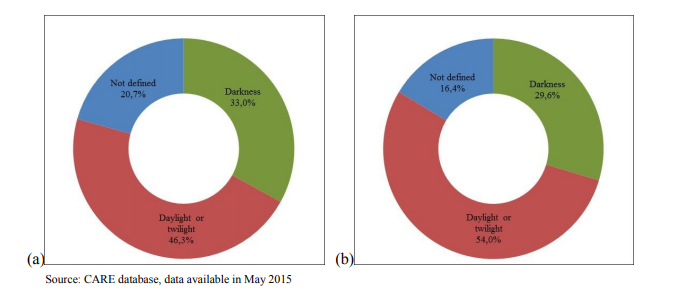
The objective of this research is the analysis of road safety related parameters in the European motorways through the exploitation of the EU CARE database with disaggregate data on road accidents, as well as of other international data sources (OECD/ IRTAD, Eurostat etc.). Time series data on motorway road accidents from 24 EU countries over a period of 10 years (2004-2013) are correlated with basic safety parameters such as the mode of transport, the manoeuvre type, the age, gender and road user type of the persons killed, as well as the lighting conditions and seasonality. This comparative analysis revealed a decrease of 48% in road accident fatalities on motorways in the decade 2004 – 2013, slightly higher than the respective decrease of 45% in the total number of fatalities. It was also found that in 2013 users of two-wheeled vehicles killed in accidents on motorways were fewer than those killed on non-motorway roads. Additionally, on motorways, the proportion of drivers’ fatalities was highest for the 50-64 age group, whereas on the remaining road network it was highest for the 25-49 age group. As regards the lighting conditions, the highest percentage of fatalities on motorways occurred in accidents during daylight or twilight. The results of the analysis allow for an overall picture of the road safety level on the European motorways in comparison to the remaining road network, providing, thus, useful support to all decision makers working for the improvement of safety on the European road network.
| ID | pc253 |
| Full Text | |
| Tags | accident analysis, information systems, international comparisons, motorways |







